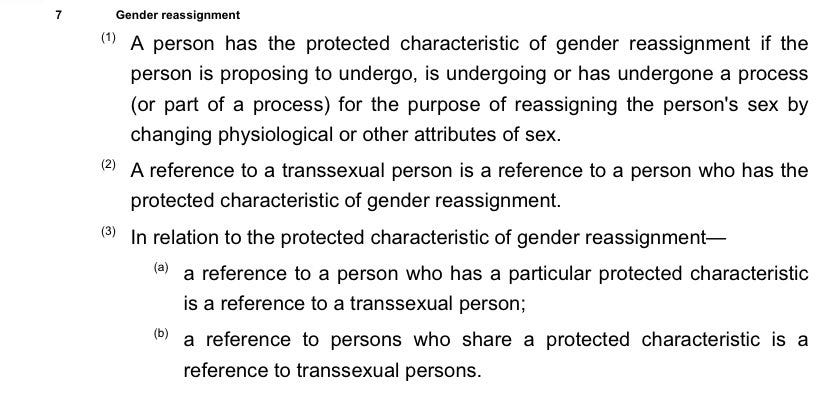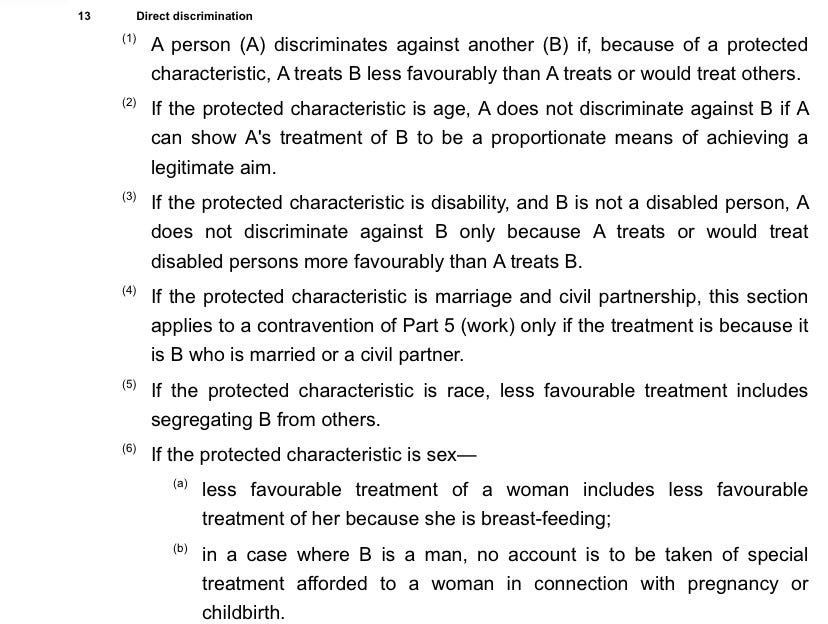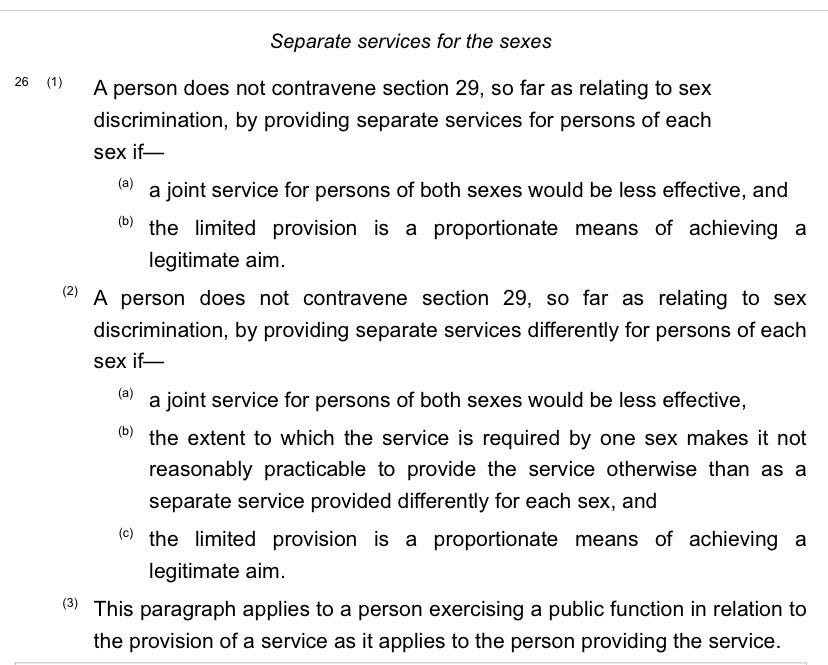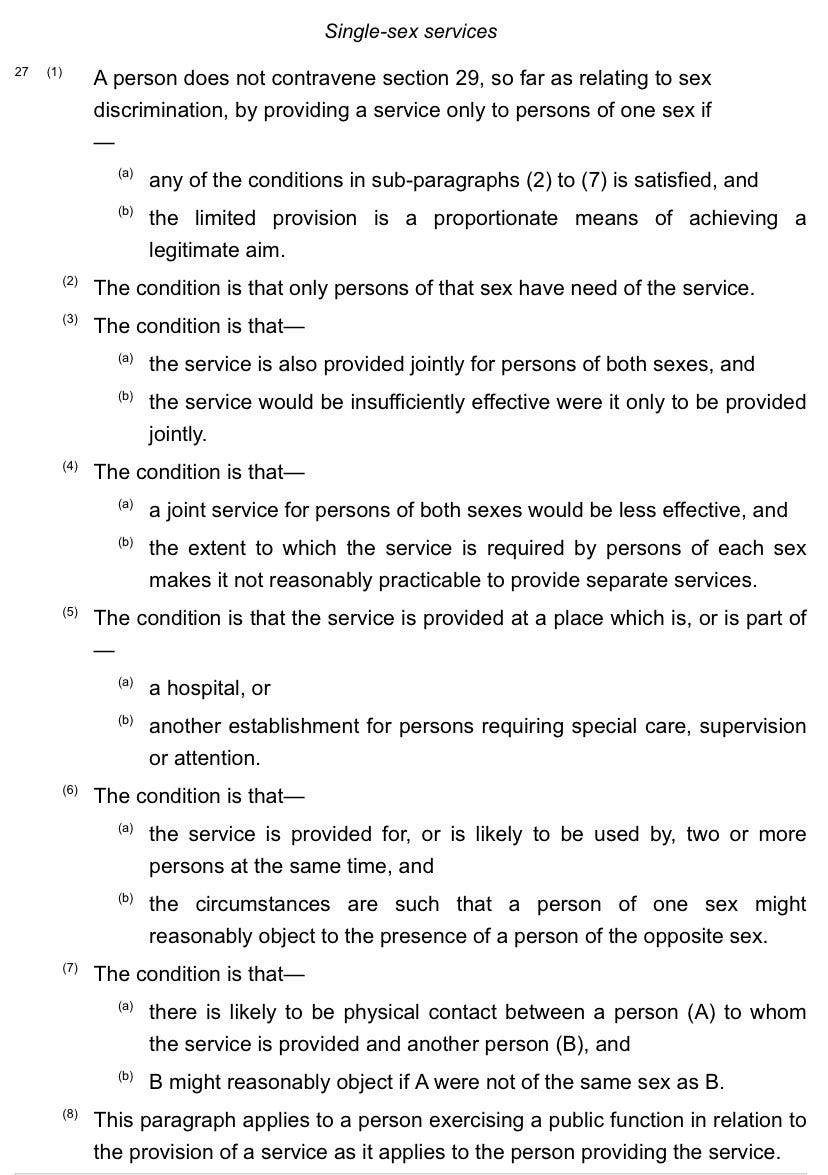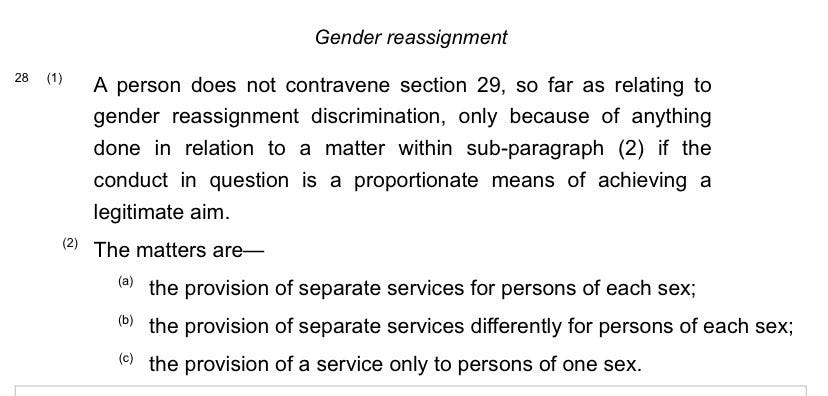The SNP can't have it both ways on Single-Sex Services
On the Radio Scotland phone in today, SNP leader John Swinney was asked about single-sex spaces. He said they are protected by the Equality Act, but not being enforced:
The legislation does provide for the protection of single-sex spaces, but the crucial point is that it has to be applied and enforced ...and for the avoidance of doubt, you know, my view is that this is the law, it should be enforced. So I think the protection that Jane [the caller] is seeking is there, it has to be enforced and applied. And if there are cases where that is not the case, then obviously, organisations need to respond to that and to set out how they're going to go about doing that, which is what I think is happening in the cases [Edinburgh Rape Crisis Centre and NHS Fife] that have been raised.
This statement is in direct contradiction with what the Scottish Government has repeatedly argued in court and will continue to argue before the Supreme Court in November.
I think it is clear that Jane, the caller, understood single-sex spaces such as changing rooms and rape crisis centres to be services separated on the basis of biological sex. A charitable reading of Swinney’s response is that he operated on that presumption too. If that’s the case, then the Scottish Government has done a great deal of work to confuse providers of these services about whether or not they can lawfully run a single-sex service that operates on the basis of sex, not gender identity or certificate status.
For example, in guidance issued by the Scottish Government in 2021, it stated that
There is no law in Scotland which states that only people assigned male at birth can use men's toilets and changing rooms, or that only people assigned female can use women's toilets and changing rooms.
The Scottish Government Trans and Non-Binary Inclusion Policy states, at [4.6] that when it comes to the use of Scottish Government facilities, “Trans staff should choose to use the facilities they feel most comfortable with”.
In March 2022, Cabinet Secretary Shona Robison stated that
the 2010 [Equality] act does not apply exceptions specifically to toilets and changing rooms. Trans people can and do use those now, whether they have a GRC or not, and they have been using them for many years.
trans people do not need to have legal gender recognition or a certificate in order to access facilities that align with their gender.
Time and again the Scottish Government has encouraged the idea that single-sex services operate on a self-ID basis. If John Swinney is concerned that protection for single-sex spaces has not been applied or enforced, he may wish to pause and consider what role the SNP has played in causing that.
This is to say nothing about the arguments made by the Scottish Government in court that the protected characteristic of sex in the Equality Act, upon which the entitlement to operate single-sex services rests, is not defined by reference to biological sex. In For Women Scotland v The Scottish Ministers the Scottish Government argued that sex in the Equality Act 2010 is modified by the Gender Recognition Act 2004 such that a single-sex service catering for women must understand ‘woman’ to mean females without GRCs and males with GRCs. If this is correct, then the operation of single-sex services becomes much more complicated.
The Law
Before we go any further it’s important to stress that the law in this area is complicated and that the Scottish Government is arguing that it should be even more complicated. It’s very difficult for service providers to understand what their legal obligations are and misinformation being spread about those obligations contributes to failures in application and enforcement of the law. One of the reasons that the single-sex exemptions are not being applied in practice is because of how complicated this law is. Another reason is because service providers are being told, sometimes by Scottish Government Ministers, that operating a single-sex service is unlawful when it isn’t.
So let’s start with how the Equality Act defines sex:
The Act further stipulates at section 212 that a woman means a female of any age and a man means a male of any age. In the Court of Session, the Scottish Government successfully argued that for the purposes of the Equality Act female sometimes means legal female and male means legal male. Following For Women Scotland 2, there is no fixed meaning of male and female within the Equality Act. What I mean by ‘legal female’ is the group of females without GRCs and males with GRCs.
This is how the Act defines gender reassignment. It’s been given an expansive reading by some tribunals but we don’t have much precedent setting law on this. For now presume that most trans people will be covered.
So we have two protected characteristics here: sex and gender reassignment. Being protected under gender reassignment doesn’t on its own change your legal sex. You can be a trans woman and still be legally male. How then do we deal with single-sex services?
The general norm is one of non-discrimination. But this is tied to characteristics. A court determining whether sex discrimination has occurred looks to treatment afforded on the basis of sex, not gender reassignment and vice versa. Showing gender reassignment discrimination doesn’t tell you anything about one’s legally recognised sex.
Against the general norm of non-discrimination, the Act allows for single sex services to be set up and for those services to directly discriminate on the basis of sex and gender reassignment if they have been set up. It’s important to stress here that these exceptions are, on their face, permissive not mandatory. So when Swinney says that people should just apply the law, he may be presenting this as if it is legally required to provide single-sex services. In some contexts I think this will be correct, particularly when the human rights of women depend on access to female-only services. In those context, failure to provide a female-only service could amount to unlawful indirect discrimination.
Exclusion from a single sex service is tied to two things: 1) can you set up a single sex service in the first place? 2) once you have a single sex service, can you maintain that by excluding those of the opposite sex? This is where the proportionality test comes in. I’ve written about that here.
It’s very important to look at the reasons the Act gives for the setting up of a single sex service. These will all be considered to constitute legitimate aims that the service can pursue. All existing single sex services will be justified by reference to one or more of these and they are not just focused on safety. The Act has a much much wider scope to justify single sex services. The question that we have now is whether exclusion of biological males from female only services is proportionate. We know it will serve a legitimate aim. The Act says so.
Bear in mind that it is not direct discrimination to exclude on the basis of sex or gender reassignment if the purpose is to maintain a single-sex service and exclusion is proportionate. Now “proportionate means” is going to be tied to the legitimate aim in question. If the aim is to maintain a single sex service then there is practically no other means of doing that than excluding those of the opposite sex.
In my view it’s almost certainly the case that the EA permits exclusion of biological & legal males from female only services. But this becomes much more complicated if the arguments advanced by the Scottish Government in FWS2 are correct and the Act treats sex as legal sex because some biological males will be legally female under the it. It will also mean that the tests for setting up a single sex service will be next to impossible to meet. How can you argue that a separate sex service will be less effective than a mixed one if “sex” is itself a mixed-sex category?
Service Providers are in an impossible position
Think about what I’ve just written. Now put yourself in the shoes of a small service provider trying to maintain a female-only changing room in the face of Scottish government messaging that people are entitled to use whatever facility they wish. Now consider the decision of the Court of Session that if you don’t have a GRC you have no right to use opposite sex facilities but if you do have a GRC you have a presumptive right to use them unless its proportionate to exclude you.
Service providers have no idea what the law is in this area. Most discrimination lawyers are struggling to make sense of it. If the current decision of the Court of Session in For Women Scotland 2 is correct, then possession of a GRC makes a difference for how the legal tests relating to single-sex services operate. That means that a service provider can be confident that if a trans woman doesn’t have a GRC they can be lawfully excluded from a female-only service set up under the exceptions in the Equality Act. But if the trans woman does have a GRC, then things get more complicated and exclusion may be unlawful.
But it gets even more complicated because inclusion could also be unlawful if, as may be the case in a rape crisis centre or a communal changing room, inclusion results in an infringement on the rights of other service users. This is what a group of NHS nurses are litigating right now.
Just to add one more grenade into the mix, it is a crime to disclose the fact that someone has a GRC if you come across that information in an official capacity. So the lawfulness of refusing access to a single-sex service may depend on whether the individual has a GRC but if you ask for information about GRC status (that is lawful) you are then subject to a criminal prohibition on sharing that information. Service providers need more support from our law than this.
John Swinney may be right that the issue here is that the single-sex exceptions are not being used. But we need to ask who is responsible for that and how might we make it easier service providers to feel confident in relying on them?




